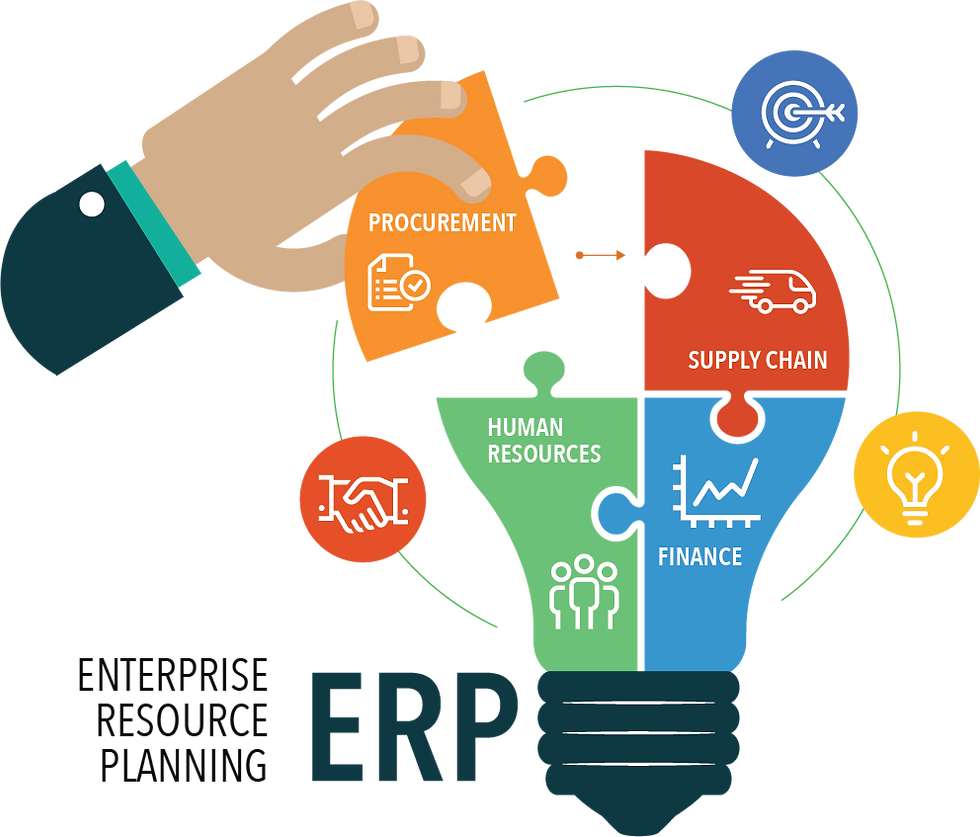Streamlining Success: The Ultimate Guide to Payroll Management Systems
- solutionscakiweb
- Nov 3, 2023
- 3 min read
Introduction
Payroll management is an integral part of every business, and getting it right is essential for the success and stability of an organization. A streamlined and efficient payroll system not only ensures employees are paid accurately and on time but also helps in compliance with tax regulations, reducing errors, and saving valuable time and resources. In today's digital age, payroll management has evolved significantly, with the advent of sophisticated payroll management systems. This ultimate guide will take you through the importance of payroll management, the benefits of using a payroll management system, and steps to streamline success.
The Importance of Payroll Management
Employee Satisfaction:
Accurate and timely payroll processing is critical for maintaining employee morale and trust. A reliable payroll system ensures that employees receive their wages, benefits, and reimbursements as expected, leading to job satisfaction and higher retention rates.
Compliance with Regulations:
Payroll management involves numerous legal and tax-related intricacies, such as tax withholdings, social security contributions, and wage garnishments. Failure to comply with these regulations can result in penalties and legal consequences, making compliance a top priority for businesses.
Cost Savings:
Efficient payroll management can save a business significant time and money. It minimizes the chances of errors and the need for manual reconciliation, thus reducing labor costs and potential legal fees associated with payroll inaccuracies.
The Benefits of Payroll Management Systems
Payroll management systems have become a game-changer for organizations of all sizes. These systems offer several advantages that can help streamline the success in your business:
Accuracy and Error Reduction:
Payroll software minimizes the risk of human errors, such as miscalculations and incorrect tax withholdings. This accuracy not only ensures employees are paid correctly but also reduces the likelihood of audits and fines.
Time Efficiency:
Automated payroll systems save time by simplifying complex payroll processes, from data entry to generating paychecks and reports. This time efficiency allows HR and finance teams to focus on more strategic tasks.
Enhanced Security:
Payroll data contains sensitive employee information, such as social security numbers and bank details. Payroll management systems provide robust security features to protect this data from unauthorized access and cyber threats.

Regulatory Compliance:
Payroll software keeps up with constantly changing tax laws and regulations, helping businesses maintain compliance effortlessly. This ensures businesses avoid costly penalties and legal issues.
Reporting and Analytics:
Payroll management systems offer powerful reporting and analytics capabilities. Businesses can gain insights into labor costs, employee turnover, and other key metrics, enabling data-driven decisions for future planning.
Streamlining Success: Steps to Effective Payroll Management
To streamline success in payroll management, follow these key steps:
Evaluate Your Needs:
Identify your specific payroll requirements, such as the number of employees, payment schedules, and tax complexities. This will help you choose the right payroll management system that fits your needs.
Choose the Right Payroll Management System:
Select a payroll software or service that aligns with your business size, industry, and budget. Consider factors like ease of use, integration with other software, and customer support.
Accurate Data Entry:
Ensure that all employee information and payroll data are entered correctly. Even the most advanced payroll system can't compensate for inaccurate input.
Set Up Automation:
Leverage the automation features of your chosen payroll management system to handle repetitive tasks, such as calculating taxes, processing direct deposits, and generating reports.
Stay Informed About Regulations:
Regularly update your knowledge of tax laws, labor regulations, and payroll compliance. Your payroll system can assist in staying up-to-date with these changes, but understanding the basics is crucial.
Regular Reconciliation:
Perform regular audits and reconciliations to identify and rectify any discrepancies or errors in your payroll system. This ensures ongoing accuracy.
Employee Self-Service:
Many payroll systems offer self-service portals, allowing employees to access their pay stubs, and tax forms, and make certain changes, reducing the HR department's workload.
Customer Support and Training:
Maximize your investment by taking advantage of customer support and training resources provided by your payroll management system provider. This will help you make the most of the system's capabilities.
Conclusion
In today's business landscape, an efficient payroll management system is essential for streamlining success. By choosing the right payroll management system, automating processes, staying compliant, and investing in employee training, your organization can achieve accurate and efficient payroll management. This not only ensures employee satisfaction but also saves time, reduces errors, and minimizes compliance risks, ultimately contributing to the overall success of your business. So, embrace the power of payroll management systems and pave the way for success in your organization



Comments